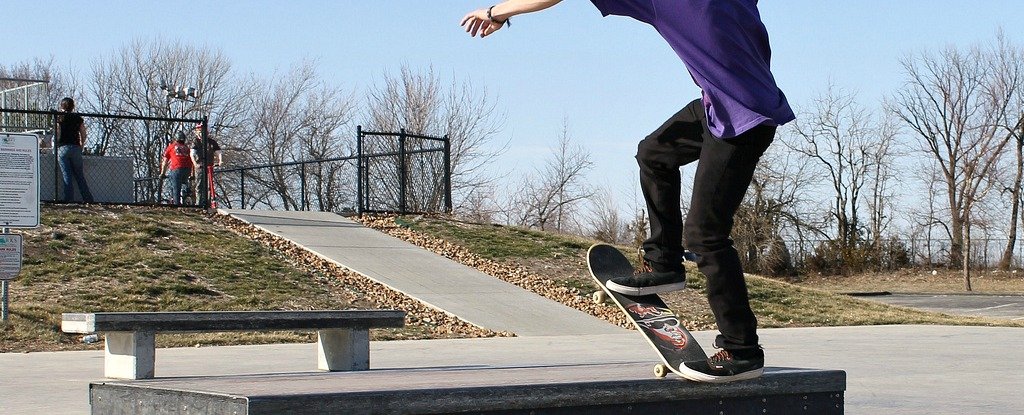http://ed.ted.com/lessons/how-mendel-s-pea-plants-helped-us-understand-genetics-hortensia-jimenez-diaz This is a TED-ED talk about Mendelian genetics.
https://genographic.nationalgeographic.com/human-journey/ This is a Nat'l Geographic (Genographic Project) interactive graphic showing the human migration out of Africa. "What stories are waiting to be told in your own DNA?" (A quote from the article).
http://www.bbc.co.uk/programmes/p033jv1y A program from the BBC world service. Where did Karl Marx get his inspiration? This is a program from 2004.
http://www.sciencealert.com/for-sports-scientists-say-practice-doesn-t-really-make-perfect From ScienceAlert, an article about how practice alone isn't enough to make a person good at sports. This was the conclusion of a study done by researchers in US and New Zealand.

https://www.sciencedaily.com/releases/2016/06/160620084935.htm From Science Daily, a report of work done at the University of Bath reviewing mammal species known from the end of the Cretaceous across N America at the same time as the dinosaurs became extinct. The review shows that 93% of mammalian species became extinct but that some mammals recovered more quickly than previously thought.

http://giphy.com/gifs/26BRQY7cHMMVzU6n6 This is an animated GIF showing a bacterium on a diatom on an amphipod. This was posted to FB by Science Communication and Visualization Somersault 18:24.
http://www.readcube.com/articles/10.1038/sdata.2016.34 This is an article about the origins of modern cities. Published in Nature Scientific Data a report of work done at Yale University. Posting of interactive gif was by Gizmodo.
http://www.gizmodo.co.uk/2016/06/see-the-exact-moment-when-the-worlds-biggest-cities-were-born/
http://www.economist.com/news/briefing/21700385-great-teaching-has-long-been-seen-innate-skill-reformers-are-showing-best From The Economist. In a study updated last year that was done at the U of Melbourne showing that what matters most in student learning is teacher expertise. This article is actually a review and other heavy hitters like Harvard, Stanford, and the American Association of Colleges for Teacher Education (AACTE) are quoted.

http://www.futurity.org/hiv-simulation-1186252-2/ From the futurity blog, a report of a computerized model of HIV that was built at the U of Chicago. The publication will appear in Nature Communications and is an NIH-funded study.

http://www.smithsonianmag.com/smart-news/researchers-look-what-happens-brain-when-music-causes-chills-180959481/ From the Smithsonian, what happens in the brain when music gives you chills? This is a report from The Guardian about research reported in Social Cognitive and Affective Neuroscience.(I didn't know this journal existed either.) Frissons, or goosebumps, are like a skin orgasm.
https://www.theguardian.com/books/booksblog/2016/jun/02/the-history-of-nonfiction-biography-of-our-culture-100-best-nonfiction-books From the editors of The Guardian 100 best non-fiction books.

https://www.sciencedaily.com/releases/2016/06/160620115949.htm This is an article from Science Daily about research done at Arizona State U to be published in Nature Chemistry showing that certain DNA sequences can conduct an electrical charge, in other words carry electricity.

http://www.bbc.com/news/science-environment-35502310 This is a report of research published in Elife recounted by a science reporter for the BBC about light-sensing cyanobacteria.
http://www.nytimes.com/2016/06/28/science/contagious-cancer-clams.html?_r=0 Carl Zimmer's NYT article about contagious cancer found in clams. The work was done at Columbia University and published in Science.

http://www.nytimes.com/2016/06/18/upshot/long-term-mistrust-from-tuskegee-experiment-a-study-seems-to-overstate-the-case.html This is a report in the NYT by Aaron Cornell who blogs for the Incidental Economist, about a study of behaviors of African-American's in terms of their trust of the medical establishment. Some say the distrust plummeted after reports of the Tuskegee study. Others say one study cannot determine the behavior of a whole race of people. Susan Reverby, one of my heroes (at Wellesley), is quoted.

http://gizmodo.com/hundreds-of-genes-spring-back-to-life-in-the-days-after-1782487652 From Gizmodo, a report of research done at the U of Washington which showed that some genes become active after death. and their activity increased up to 4 days after death. This work was published in Science magazine.
http://www.nytimes.com/2016/06/24/science/mitochondrial-dna-mothers.html?_r=0 Article in NYT about international research studying DNA in sperm of C. Elegans. Sperm DNA self-destructs upon fusion with egg. This could be useful as a cure for certain diseases. One of the authors was at U of Colorado Boulder.

No comments:
Post a Comment